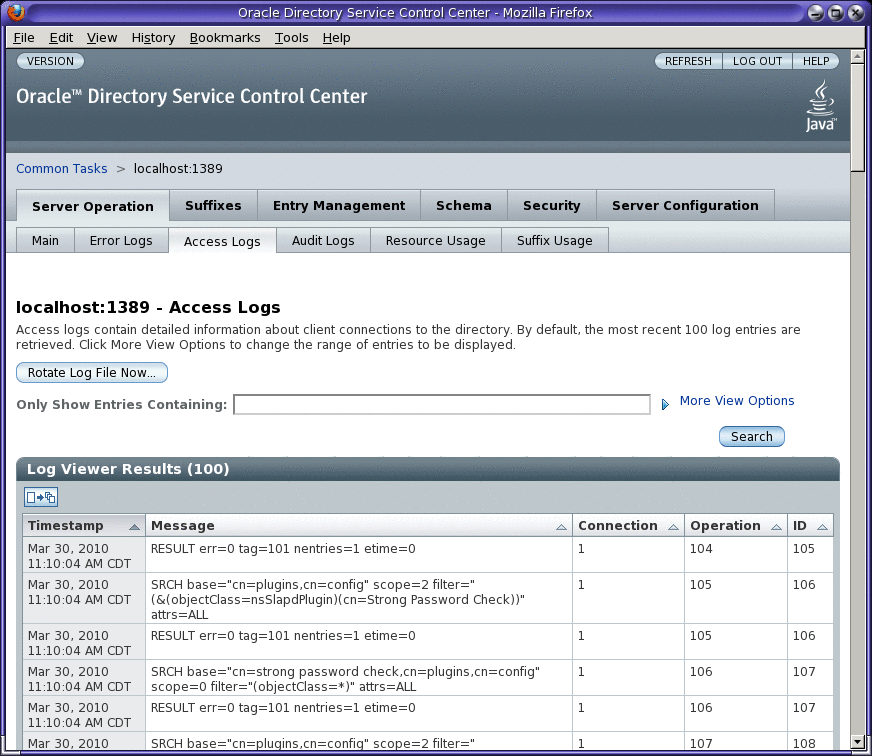Viewing Directory Server Logs
You can view the logs directly on the server in the default instance-path/logs file. If you have modified the default path, you can find the log file location using the dsconf command as follows:
$ dsconf get-log-prop -h host -p port log-type path |
Alternatively, you can view the log files through Directory Service Control Center (DSCC). DSCC enables you to view and sort the log entries.
The following figure shows a sample of a Directory Server access log in DSCC.
Figure 14–1 DSCC Access Log

 To Tail Directory Server Logs
To Tail Directory Server Logs
You can use the dsadm command to display a specified number of lines of the Directory Server logs, or to display log entries younger than a specified age. This example tails the error log. To tail the access log, use show-access-log instead of show-error-log.
-
Display error log entries younger than a certain age.
$ dsadm show-error-log -A duration instance-path
You must specify a unit for the duration. For example, to display error log entries younger than 24 hours, type:
$ dsadm show-error-log -A 24h /local/dsInst
-
Display a specified number of lines from the error log (starting from the end).
$ dsadm show-error-log -L last-lines instance-path
The number of lines is expressed as an integer. For example, to display the last 100 lines, type:
$ dsadm show-error-log -L 100 /local/dsInst
If you do not specify a value, the default number of lines displayed is 20.
- © 2010, Oracle Corporation and/or its affiliates
